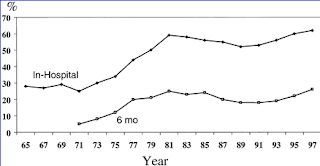Postprandial de novo lipogenesis and metabolic changes induced by a high-carbohydrate, low-fat meal in lean and overweight men
Postprandial de novo lipogenesis and metabolic changes induced by a high-carbohydrate, low-fat meal in lean and overweight men Background: Adjustments of carbohydrate intake and oxidation occur in both normal-weight and overweight individuals. Nevertheless, the contribution of carbohydrates to the accumulation of fat through either reduction of fat oxidation or stimulation of fat synthesis in obesity remains poorly investigated. Objective: The objective of this study was to assess the postprandial metabolic changes and the fractional hepatic de novo lipogenesis (DNL) induced by a high-carbohydrate, low-fat meal in lean and overweight young men. Design: A high-carbohydrate, low-fat meal was administered to 6 lean and 7 overweight men after a 17.5-h fast. During the fasting and postprandial periods, energy expenditure (EE), macronutrient oxidation, diet-induced thermogenesis, and serum insulin, glucose, triacylglycerol, and fatty acids were measured. To determine

